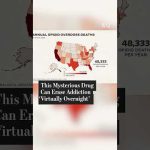A historic moment for Second Amendment rights occurred when President Donald Trump signed the “one big beautiful bill” into law on July 4, 2025. This monumental legislation, officially known as HR1, contains various provisions, including significant changes to the National Firearms Act (NFA). Among its most groundbreaking aspects is the elimination of the $200 tax stamp required for the making and transfer of suppressors, short-barreled rifles, and short-barreled shotguns. With this law, gun owners are cautiously optimistic about a shift toward expanded gun rights.
Beginning January 1, 2026, individuals interested in acquiring suppressors or short-barreled firearms will no longer face the hefty tax burden that had previously been a barrier to many. Though this change is celebrated as a partial victory, it is vital to understand that other NFA regulations still apply, such as background checks, fingerprint submissions, and registration in the ATF’s National Firearms Registration and Transfer Record. While the tax burden may be reduced, compliance with existing NFA requirements remains crucial for legal ownership.
This legislative change marks a remarkable shift after 91 years of maintaining the $200 tax. Activists and pro-Second Amendment groups, such as the American Suppressor Association, have hailed this as a significant step towards dismantling the NFA entirely. Various organizations, including the Gun Owners of America and the National Rifle Association, have voiced their intent to challenge the legal framework surrounding firearm registries. They assert that these regulations are not only unnecessary but may also be unlawful under current interpretations of the law.
Critics of the measure have argued that eliminating the tax contributes to public safety concerns. However, statistics indicate that very few crimes involve NFA-regulated items, with only two documented cases in the past 20 years. These figures emphasize the notion that responsible gun ownership remains a key component of personal and community safety, rather than the premise for increased restrictions. As the fight for full deregulation continues, the argument stands firm: responsible gun owners should not face undue restrictions based on unfounded fears.
Additionally, with the tax stamp fee removed, many are excited about the possibility of increased sales in suppressors and short-barreled firearms, making them more accessible to law-abiding citizens. As potential buyers consider their options, it is important to remember that compliance with the remaining regulations is still necessary. Gun owners must remain vigilant and informed about the rules governing their rights, especially in an evolving legal landscape.
In summary, the signing of the “one big beautiful bill” signals a monumental change in the fight for Second Amendment rights. The removal of the $200 tax stamp is a step forward, albeit amid ongoing challenges posed by existing regulations. With proactive efforts from various advocacy groups, the path toward greater freedom for gun owners is becoming clearer. While the journey is far from over, gun enthusiasts can look forward to hopeful developments in expanding their rights and preserving their freedoms. The resolution of future laws and court decisions will reverberate for years to come in the ongoing discussion surrounding the Second Amendment.




